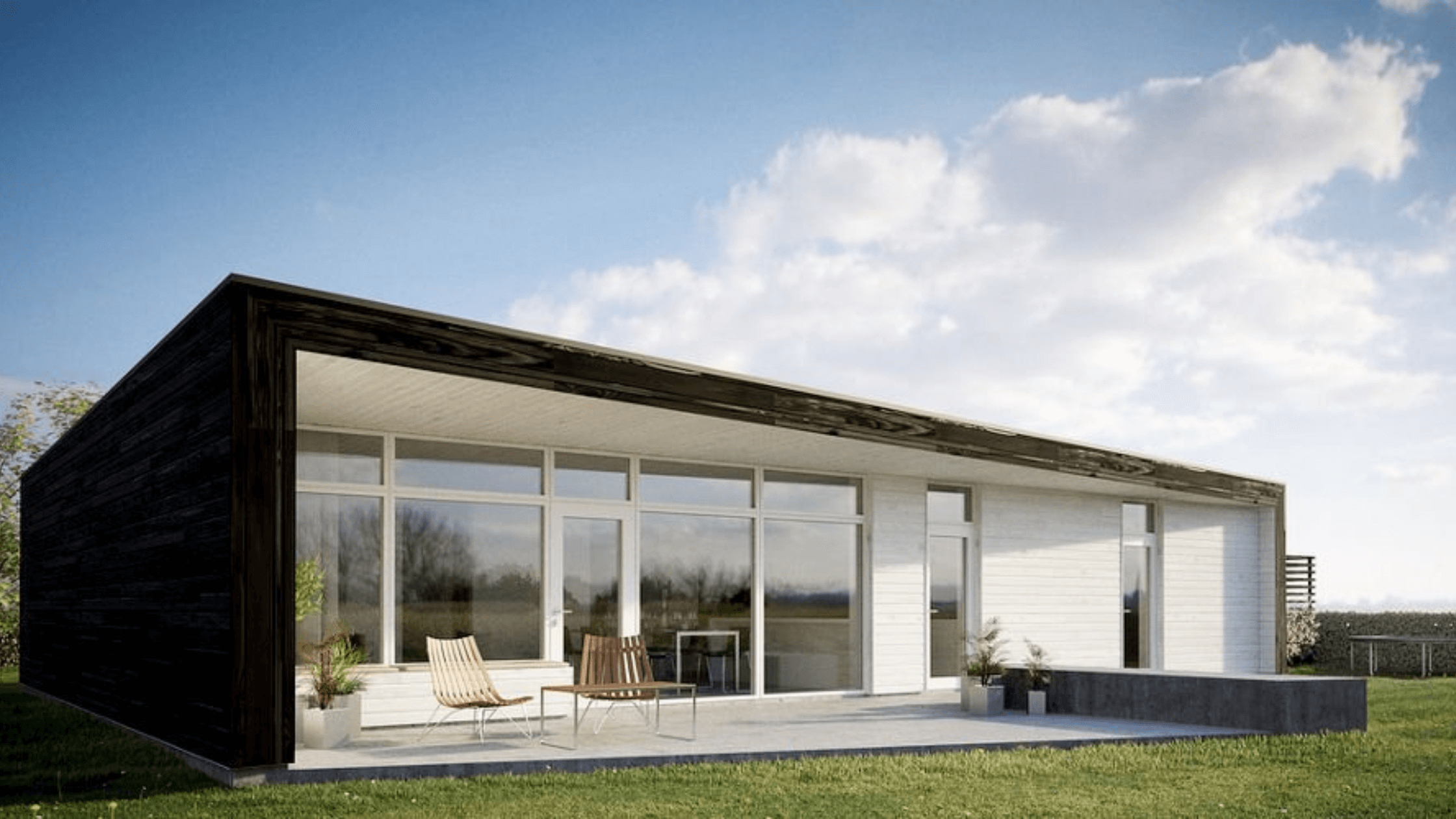Passive solar design maximizes natural sunlight to heat, cool, and illuminate a building without relying on mechanical systems. It incorporates strategic planning in areas like window placement, thermal mass, and shading to create energy-efficient, comfortable spaces. Whether designing a new home or retrofitting an existing structure, passive solar strategies reduce energy bills and lower your carbon footprint.
Quick look
- Passive solar design uses sunlight to heat and cool buildings efficiently.
- Window placement and materials play a critical role in energy savings.
- Thermal mass stores and redistributes heat during cooler periods to maintain temperatures.
- Proper shading and ventilation are essential for summer cooling.
- Passive solar systems require careful planning but deliver long-term benefits like lower energy bills and a smaller carbon footprint.
What is passive solar?
Passive solar design is an architectural approach that uses the sun’s energy to heat, cool, and light spaces. It doesn’t rely on mechanical devices like pumps or fans, making it a cost-effective and eco-friendly option for builders and homeowners. By capturing and storing solar heat during the day, buildings can maintain a comfortable indoor temperature without consuming excess energy.
This design strategy reduces dependency on conventional energy sources, lowering utility bills and reducing greenhouse gas emissions. It also aligns with modern sustainability goals, making it a popular choice for residential and commercial construction.
Key benefits include improved energy efficiency, enhanced occupant comfort, and greater design flexibility. Unlike active solar systems, passive methods are integrated directly into a building’s architecture, requiring thoughtful planning during the design phase to maximize their effectiveness.
How passive solar design works
Passive solar design relies on three core principles: capturing sunlight, storing heat, and redistributing it when needed. South-facing windows are commonly used to gather solar energy, while thermal mass materials like concrete or brick absorb and store heat. This stored heat is released slowly to maintain consistent indoor temperatures, especially in colder months.

Ventilation and shading devices regulate heat gain and prevent overheating in summer. For example, overhangs or deciduous trees provide shade during warmer months while allowing sunlight to enter during winter. With the right combination of design elements, passive solar systems create a balance of heating and cooling tailored to your building’s needs.
Window placement
Windows act as the gateway for solar energy. South-facing windows capture the most sunlight in the Northern Hemisphere, making them crucial for passive solar design. Properly sized and placed windows reduce reliance on artificial lighting and heating. Double-glazed or low-emissivity (low-E) glass enhances efficiency by minimizing heat loss while allowing solar heat gain.
Thermal mass
Thermal mass materials absorb, store, and release heat. Common examples include concrete, stone, and brick. During the day, these materials collect heat from sunlight, which is gradually released as temperatures drop at night. This process ensures consistent indoor temperatures and reduces the need for mechanical heating.
Distribution mechanisms
Once heat is collected, it must be distributed evenly throughout the building. Conduction, convection, and radiation all play a role in this process. Features like vents and fans help circulate warm air, while strategic placement of thermal mass ensures effective heat transfer.
Control strategies
Control mechanisms like adjustable blinds, operable windows, and shading devices provide flexibility in managing heat gain and loss. These tools help prevent overheating in summer while optimizing solar energy collection in winter. Automated systems can further improve efficiency by adjusting settings based on temperature and sunlight.
Building orientation
The orientation of a building plays a critical role in passive solar design. Structures are typically positioned so that the longest side faces south (in the Northern Hemisphere) to maximize solar gain in winter while minimizing exposure to harsh summer sunlight. Proper orientation also considers surrounding features like trees, neighboring buildings, or terrain that may cast shadows and reduce solar efficiency.
Insulation
Insulation is vital for retaining heat collected through passive solar systems. High-quality insulation in walls, roofs, and floors helps maintain stable indoor temperatures by minimizing heat loss during winter and heat gain in summer. Additionally, airtight construction prevents drafts and ensures that heat remains trapped inside the building, improving overall energy efficiency.
Shading devices
Shading is essential to prevent overheating during warmer months. Fixed overhangs are designed to block high-angle summer sunlight while allowing low-angle winter sunlight to enter. Other shading devices, such as awnings, pergolas, or exterior blinds, offer flexibility and control over solar exposure. Vegetation, such as deciduous trees or vertical gardens, can also provide effective shading while enhancing a building’s aesthetic appeal.
Ventilation
Natural ventilation works in conjunction with passive solar design to maintain indoor comfort. Cross-ventilation, achieved by strategically placing windows and vents, allows cool air to flow through the building during summer. Ventilation stacks or high-operable windows can also expel warm air, ensuring a comfortable indoor environment year-round.
Passive solar heating and cooling
Sun-tempered
Sun-tempered designs rely on moderate solar gain to reduce heating needs without extensive structural changes. These systems are less complex than other passive strategies, making them ideal for retrofits or new builds with minimal budget constraints.
Direct gain
Direct gain systems capture sunlight through south-facing windows and store heat in thermal mass materials within the building. This is the simplest and most common passive solar heating method. It offers quick heat transfer but requires careful planning to prevent glare or overheating.
Indirect gain
Indirect gain systems, such as Trombe walls, place thermal mass between the sun and the building’s interior. These systems absorb and store heat, which is slowly released into living spaces. This setup minimizes temperature fluctuations and provides consistent warmth.
Isolated gain
Isolated gain systems collect solar energy in a separate space, such as a sunroom. The heat is then transferred to the main building via vents, fans, or conduction. This strategy is ideal for adding solar heating to existing structures without extensive remodeling.
Roof pond systems
Roof ponds use a shallow pool of water on the roof as a thermal mass to regulate indoor temperatures. The water absorbs solar heat during the day and releases it at night to provide consistent heating. Reflective covers or insulation can be added during warmer months to prevent overheating. This method works well in climates with clear skies and large temperature fluctuations.
Passive cooling techniques
Passive cooling methods, such as cross-ventilation and evaporative cooling, are essential for maintaining comfort in warmer months. Cross-ventilation leverages strategically placed windows and vents to allow cool air to flow through the building, while evaporative cooling uses water to reduce indoor temperatures. Both methods minimize reliance on mechanical air conditioning systems.
Seasonal sun shading
Seasonal shading involves using elements like overhangs, louvers, or vegetation to block direct sunlight during summer and allow it in during winter. For example, deciduous trees provide natural shade in hot months and let sunlight through when their leaves fall. This strategy ensures year-round energy efficiency.
Night flushing
Night flushing involves cooling the building by opening windows or vents at night to let in cool air, which displaces the heat accumulated during the day. Thermal mass materials release stored heat to the cooler air, producing a more comfortable indoor environment by morning. This is especially effective in arid climates with significant temperature differences between day and night.
Design considerations for passive solar

Successful passive solar design requires meticulous planning to ensure maximum efficiency and comfort. Orientation is one of the most critical factors—buildings should be aligned with the longest side facing south (in the Northern Hemisphere) to capture as much sunlight as possible throughout the year. This alignment optimizes heat gain during colder months while minimizing energy usage. High-quality insulation and airtight construction are equally vital for retaining heat in winter and keeping warm air out in summer. Without these elements, much of the energy captured by the system will be lost.
Shading devices play a key role in regulating indoor temperatures and preventing overheating. Fixed overhangs can provide consistent shade, while deciduous trees offer natural shading that changes with the seasons—leafy coverage in summer and open exposure in winter. Adjustable options like operable louvers or retractable awnings offer even more control. Thermal mass placement must also be carefully planned. The size, location, and type of materials—like concrete, brick, or tile—directly impact the system’s ability to absorb, store, and release heat efficiently. Too much thermal mass in the wrong place can cause temperature fluctuations, while too little may fail to store enough energy to maintain comfort.
In addition to these factors, designers should consider local climate conditions, including sunlight availability, average temperatures, and wind patterns. For example, homes in cold climates might benefit from larger south-facing windows to increase heat gain, while those in hot climates may prioritize shading and ventilation. Passive solar systems must be tailored to the site’s specific needs and occupants, making early planning and collaboration with architects and engineers essential for success.
Bottom line
Passive solar design is an innovative way to harness the sun’s energy for heating, cooling, and lighting. With thoughtful planning and execution, it can lower energy bills, increase comfort, and reduce your carbon footprint.
For more insights into sustainable design and construction, subscribe to our newsletter at Under the Hard Hat and follow us on social media.




1 comment